Pasture Champions: Laura and Matt Elliott, Sandy Hill Farm, Cotswolds 1/2
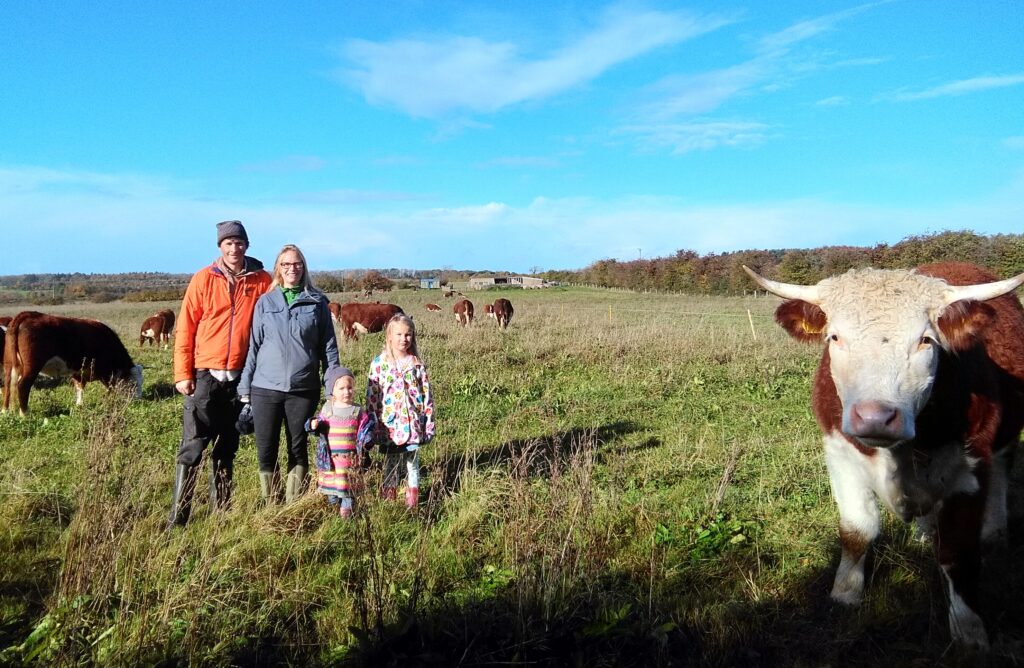 Elliotts at Sandy Hill
Elliotts at Sandy Hill
Tell us about your farm, it's location, size, altitude, climate, soils, enterprises, organic/PfL/other status?
11 years ago Matt and I were cruising along in jobs we could have made careers out of and done the sensible thing – buy a house, get a mortgage, settle down in an ‘up and coming’ area of Bristol, not far from our allotment plot. But something tugged at us, we needed to try a few things out and the Universe obliged. One job ended, another allowed a career break and that security enticed us to take a year out in which we decided to try out Wwoofing around the UK and Ireland – mostly because we loved our allotment, watched a fair bit of River Cottage and quite fancied ourselves as successful smallholders.
I mention the Wwoofing because firstly it pushed us to consider an alternative way of living, but also during that year we stayed at a diverse range of farms, market gardens, smallholdings and conservation projects. We met a diverse community of individuals, experienced diverse cultures, were fed diverse meals and worked on a diverse range of farming enterprises, in diverse (UK) environments.
I think the experience opened our eyes to the idea of abundance, of joining in with nature and that there is no ‘right’ way to do this.
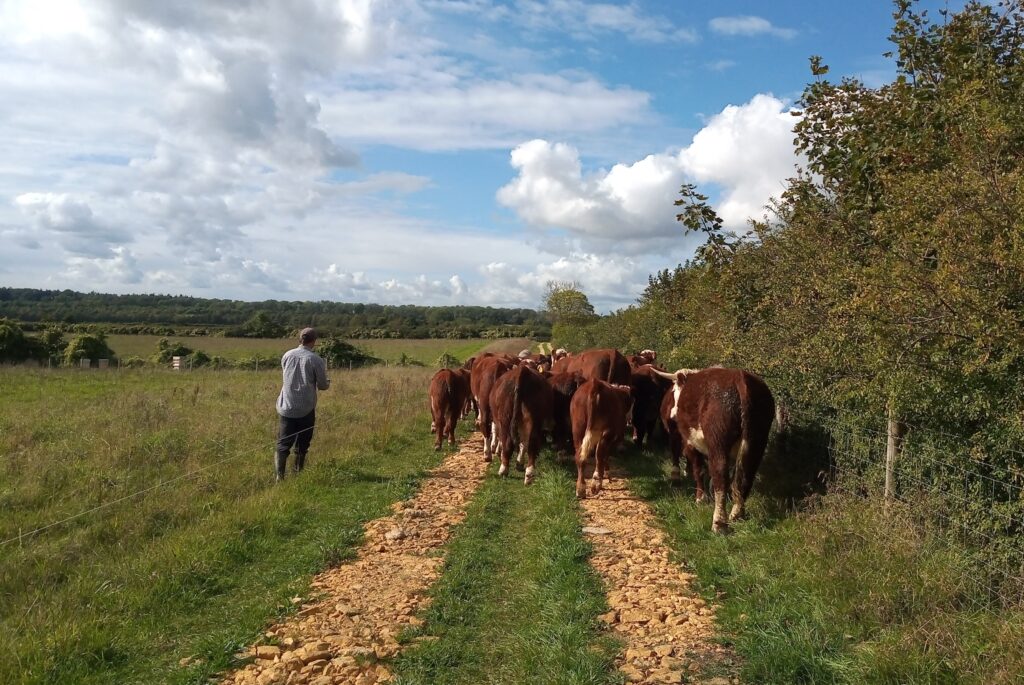 Sandy Hill Mob
Sandy Hill Mob
Well, fast forward a little and we now find ourselves as new entrant farmers, 3 years into a tenancy on Sandy Hill Farm Land, a 110 acre farm on the National Trust’s Sherborne Park Estate in the Cotswolds. The land is gently sloping down to the Sherborne Brooke, is South facing and sits between 125 and 175 metres above sea level. We have a herd of Pedigree Hereford Cattle which are certified Pasture for Life and marketed under the label ‘The Sandy Hill Mob’ – we sell all our beef direct in boxes selling locally.
We also work closely with a really inspiring organic pig farm, Eastleach Downs, who are radically changing their system which includes growing all of their own feed for the pigs and thus not relying on imports of soya.
We sell their pork alongside our beef and we have also started a small flock of Shropshire sheep (Matt’s a Shropshire lad!) at the request of customers for lamb. Pretty much the whole farm is under Higher Level Stewardship options which includes floristically enhanced margins around all of our ex-arable herbal leys, limits cutting of our hedges which are spilling out and a feast for redwings and fieldfares come the winter.
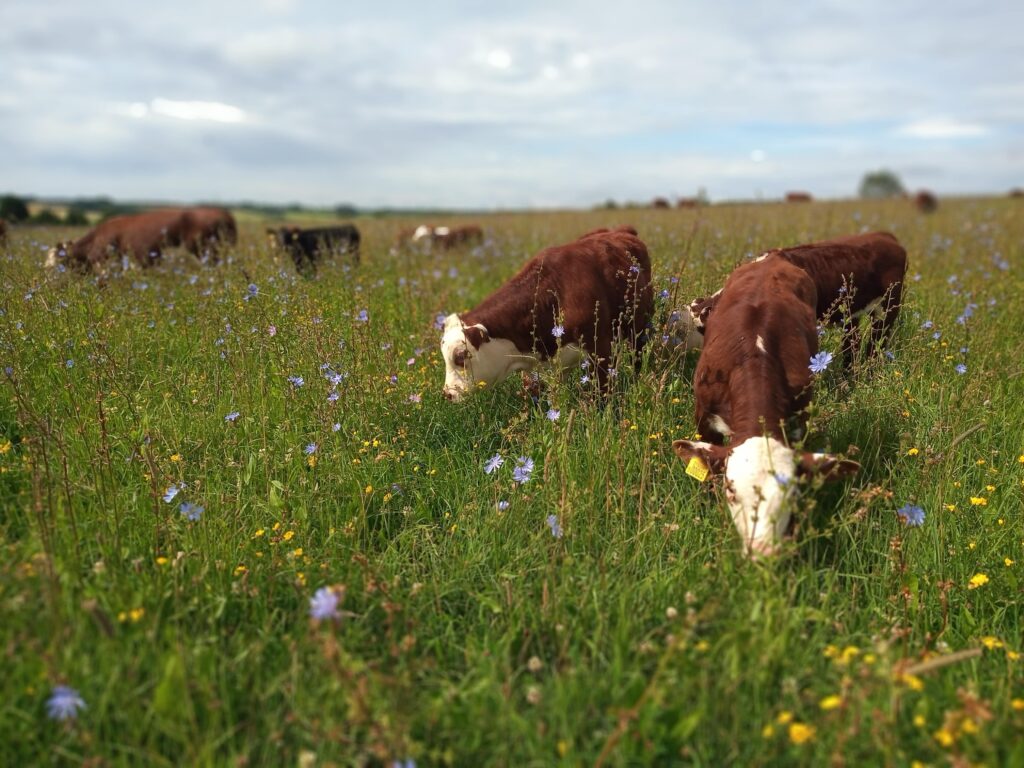 Herbal Ley
Herbal Ley
Give us a general description of the biodiversity on your farm – essentially above ground (but reference to below ground if relevant) – both flora and fauna
60 acres of the land is ex-arable. Prior to 2016 it had been let to a neighbouring tenant and managed as conventional arable land – certainly ploughed every year and most probably sprayed with pesticides/fungicides/fertiliser as required by the system or the crop that year.
5 years ago, the National Trust took the land back in-house and planted up these fields with a diverse Cotswolds Seeds herbal ley, including a multitude of grass species, sainfoin, chicory, salad burnet, clovers, vetches, plantain and more.
This land is very sandy/Cotswold brash, i.e. It is very free draining. This is useful for outwintering our cattle but it also means that there is very little topsoil left after years of intensive arable use and can dry out quickly in the summer months. We are, however already seeing changes.
We took the land on in 2018 and started mob grazing our Pasture for Life certified herd of pedigree Hereford cattle immediately.
The last 2 years we have noticed a few Pyrammidal orchids coming up in the herbal leys which is very encouraging – not least because it means that the mycorrhizal fungi networks that orchid seeds depend on to germinate are returning.
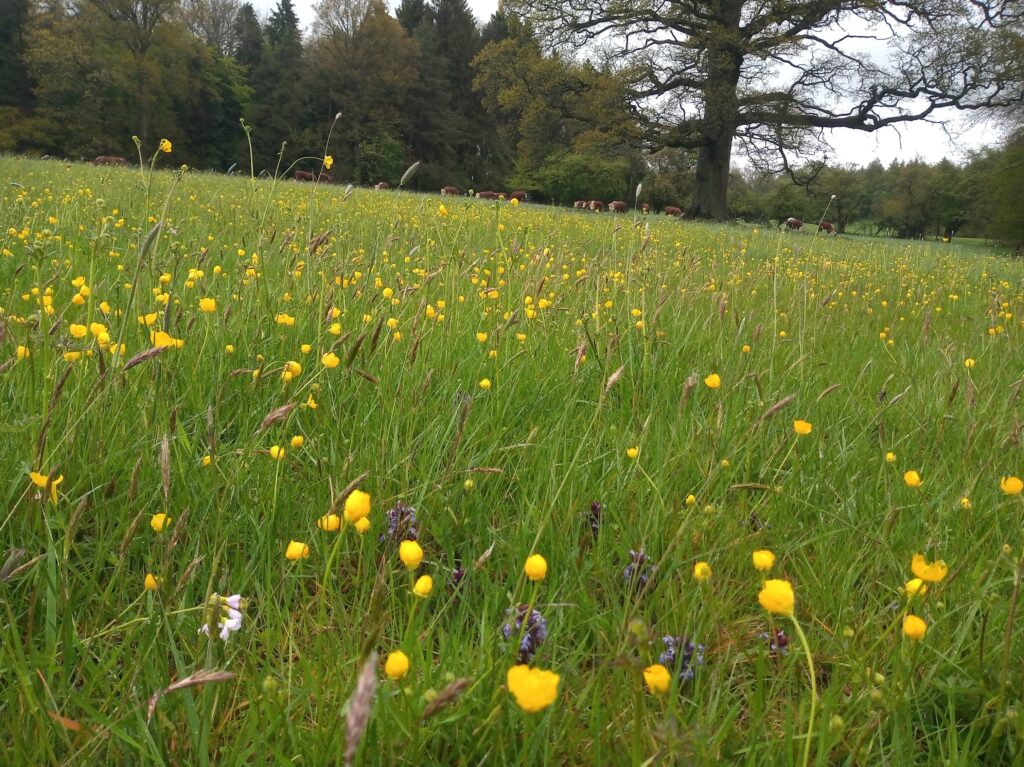 Parkland and flowers
Parkland and flowers
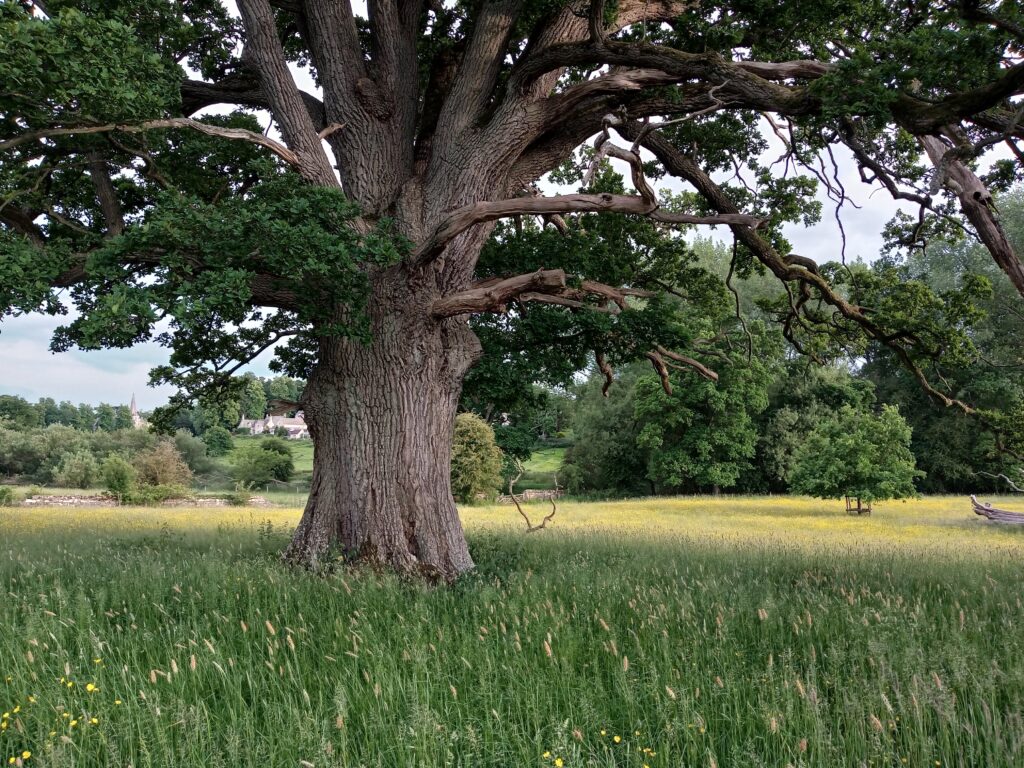 Parkland ancient Oak
Parkland ancient Oak
The remaining 50 acres of the farm is permanent pasture. Historically one field had horses kept on it and signs of compaction still show with a multitude of docks and thistles. The remaining fields had sheep set-stocked on the land – it was kept bowling green short and likely fertilised. There is a lack of diversity of flowering plants on the parkland fields, but plenty of buttercups and patches of creeping thistle! In contrast to the ex-arable fields, this half of the farm is heavy clay and we can’t graze the majority of it in the winter or when it is very wet. Acorn and Milking ground are historic parkland fields, (& ridge and furrow) and contain Oak trees thought to be 400+ years old plus a good number of fallen oaks, which are left in situ to provide plenty of habitat for dead-wood loving insects and beetles (and therefore their predators also). They also serve as excellent scratching posts for cattle!



